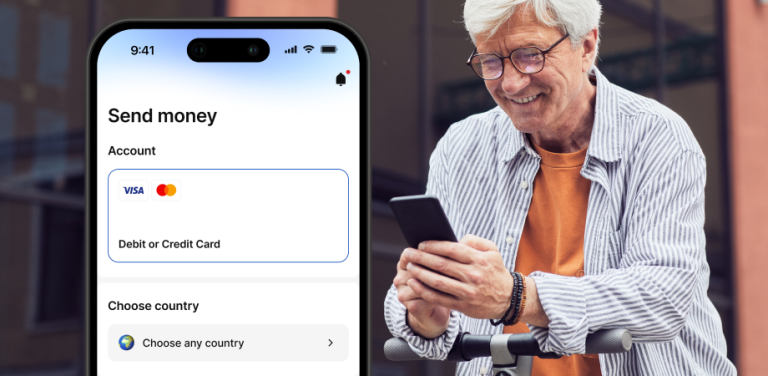Transfer Money Overseas from Australia
20 May 2024

There are many reasons to transfer money overseas from Australia. Many of us have family, friends or spouses living overseas. Birthdays, weddings, living expenses, business interests and an almost endless array of other possible expenses all equate to hundreds of billions of dollars being sent overseas around the world every year. In fact, almost $10 billion dollars was sent overseas from Australia in 2023 alone.
If you want to transfer money overseas from Australia, you need to understand that there are many platforms you can use. But you need to be discerning when choosing the best method, and the best company. You want to consider prices, hidden fees, exchange rates, reliability, legitimacy and many other things. In this blog, we will take you through all the important considerations you should make when choosing which company to remit with. By the end, you will be armed with far more information, allowing you to be more discerning when sending money overseas from Australia.
Types of overseas money transfers
There are many different types of overseas money transfers. This is a payment made from one account to an overseas account. This is a much simpler process than it once was. Let’s take a look at them.
Bank transfers
These are used to directly move money from your account in an overseas bank account. This type of transaction is known as a money transfer, a telegraphic transfer, a wire or a SWIFT transfer. These transfers are, however, anything but swift. These can take up to five business days to go through. They are also more expensive. When sending money overseas with a bank, the exchange rate will usually be significantly less competitive than sending with a money transfer company, like e-Pocket.
Money transfer companies
These are generally the cheapest option when sending money overseas. The company can transfer the money to the recipient’s bank account, or they can arrange for the recipient to collect the money from a local branch or agent.
Mobile wallet transfers
A mobile wallet stores credit and debit card information on mobile devices, such as tablets, smartphones and smartwatches. Mobile wallets can be used for online purchases, transactions in certain in-person stores, or to transfer money overseas. When you set up your e-Pocket account, you store money on your e-Pocket wallet.
Cash pickup
Also known as cash remittance, this method can be a convenient and efficient way to collect money for recipients. They are more common in places with fewer transfer options, and are particularly important for recipients who do not have a bank account.
International money orders
Some people will also know this as an international bank draft. This is when a bank gives you an internationally guaranteed cheque, which you post to the recipient, who cash or deposits the cheque at their bank. Whilst this is more secure than sending a personal cheque, it is much slower and more expensive than an online transfer.
International Wire Transfers
This is a bank service used to electronically transfer money from one bank account to another bank account in a different country. The average transfer time is usually around 1-2 business days. These are normally made using the Society for Worldwide Interbank Financial Transactions (SWIFT) network. This institution allows the transfer of money between banks internationally.
These types of companies usually have multiple payment options, such as online buy using a bank card, or in person at a branch or an agent, using cash or EFTPOS. The money will usually reach the recipient more quickly when sent in person, but this tends to incur a higher fee.
Balance transfer
A credit card balance transfer is the movement of funds from one credit card to another. This usually incurs a fee, typically between 3% and 5% of the transfer amount. Some companies do not charge fees in the first 6 to 18 months of using a new card.
Handy terms to know
Different receiving banks have different requirements when sending money to them. They will often ask for SWIFT, IBAN and/or BIC. So what are these?
- SWIFT: Society for Worldwide Interbank Financial Telecommunication.
- IBAN: International Bank Account Number.
- BIC: Bank Identifier Code.
Factors to Consider Before Sending Money Online
*None of the following should be taken as advice, nor are any examples we use definitive or reliable. These are merely observations of general trends.
Many people simply choose banks when they send money internationally. There is a certain logic to this. We keep our money in banks, there are often branches nearby, and we generally trust them. For that sense of reliability, however, we often pay hefty prices. You will most likely pay exorbitant transfer fees and high exchange rates when sending money overseas with a bank. According to the World Bank’s 2023 Remittance Prices Worldwide report, on average, over 12% of the money you pay on an international money transfer will not go to the recipient.
To find the best exchange rates and fees, you should do thorough research into the market. There are many money transfer companies that are just as reliable as the big banks, but usually charge you more competitive exchange rates and significantly smaller fees. e-Pocket, for example, gives you extremely competitive exchange rates, and charges significantly lower rates than the big banks. Consider the following before sending money online.
- Exchange rateMost money transfer companies have calculators on their websites, making it easy to compare rates. But keep in mind that companies charge hidden fees. Often companies will put a good exchange rate or low fees at the forefront of their advertisements, but additional fees will appear during the remittance process. Are you curious about how the exchange rate is calculated?
- Transfer limitIs there a limit to how much you can send?
- Transfer timeHow long will it take for your money to appear in the recipient’s account?
- Payment optionsDo they allow you to send money through your preferred method?
- Receiver optionsCan the money be delivered as cash, picked up as cash, deposited into a bank account, deposited into a mobile wallet linked to their phone? Do they have all, some, or one of these options?Companies who do not hide fees are often more trustworthy. For example, at e-Pocket we make our fees very clear, before you begin the transaction, and you know the exchange rate in advance. These are very easy to find. For example, if you were sending money to the Philippines from Australia, you would do the following:
- Visit the e-Pocket remittance page.
- Type in the amount you want to send in the “You send” box.
- Select PHP from the drop box to the right of the “recipient gets” box.
- Check the number in the “recipient gets” box.
Regulations and Compliance for International Money Transfers
There are a number of regulations for international money transfers from Australia, overseen by AUSTRAC (Australian Transaction Reports and Analysis Centre) and governed by Anti-Money Laundering (AML) laws. These are required so both senders and receivers of money can be confident transactions will be completed as planned. Additionally, these regulations are also designed to prevent fraud and other criminal activity. For these reasons, you should only use money transfer services that are regulated.
Having an understanding of these regulations takes a lot of the stress out of the transaction process. You know that if that platform is meeting their compliance requirements, you are significantly more safe.
Your requirements for international money transfers
It is a good idea to clarify all the details of your transaction in the report, to ensure you are meeting all transfer requirements before the report is submitted. They will likely assist you with the process. They will ask for the following:
- Certificates displaying the address and date of birth of the recipient.
- The reason for the transfer.
- Bank statements of your business’ monthly profits and income.
- Receipts.
- Origin of the funds.
These are required by the government to prevent significant financial crimes being committed. They may be tedious, but they are also necessary.
When is the best time to send money overseas?
First, you should arm yourself with some strategies regarding exchange rates. Whilst there is no exact science to it, there are better times to send money overseas than others. With exchange rates constantly fluctuating, there is always a chance that if you find a great deal, it will change at any moment.
Nonetheless, arming yourself with more knowledge about how the system works will increase your chances of getting a better deal.
Bank branches and money transfer outlets adjust their exchange rates regularly. If you are looking for the best deal, and are willing to check multiple platforms, it is a good idea to keep a regular eye on all of them. Sometimes it can be a matter of who is offering the best exchange rate at any given time, but often there are other things to consider.
For example, platforms often increase their fees during the busier periods. These tend to be peak times like at the start of the end of the month.
Additionally, you should also consider the following:
- Interest rates
- Inflation
- Political stability
- Global economy
Tips for Safe and Secure Money Transfers
It is always important to stay as safe and secure as possible when sending money internationally. Yes, it is much more simple and convenient than it once was, but with that convenience comes many risks. If you want secure international transfers, consider doing the following:
- Choose a trustworthy provider
- Use secure platforms
- Use platforms with strong authentication
- Verify recipient information
- Use strong passwords
- Keep track of your account activity
- Beware of phishing scams
- Check if they have a exchange rate guarantee
- Check transfer fees
- Read policies
Finding the cheapest way to send money overseas from Australia
Despite the fees associated with sending money overseas with a bank, Australians still use them a lot. In fact, 30% of international transfers from Australia are made through banks. This means that a large portion of people sending money overseas from Australia are paying far more to do so than necessary. In order to get the best deal possible, you need to consider a plethora of factors. This includes comparison of transfer fees, comparison of exchange rate margins, looking for promotional offers and discounts, whether they offer bulk transfers and volume discounts, or their transfer speed and efficiency, as well as many more factors.
Consider the following factors:
- Mid Market rate
- Exchange rate markup
- Transfer fees
- Speed
- Security
- Collection method
- Intermediary bank fees
- Recipient bank fees
- Use e-PocketWhen you use e-Pocket to send money overseas from Australia, you cut out a lot of the nonsense of other remittance companies. e-Pocket offers very competitive exchange rates, which are often better than most competitors. But our deals with fees are incredible. At the time of publishing, e-Pocket is offering $0 fees on transfers below $10,000 AUD. Even better, there are no hidden fees from the total remittance sent.Ultimately, finding the best method to send money internationally from Australia can be a complicated process. Whether you want the cheapest price, the most reliable service, a trusted name, or all of the above, the more thoroughly you investigate the market, the better the chance you have of finding a company you are happy with.Whether you require customer support for international transfers, need to track a transfer you have made with our platform, or have any other questions or enquiries, you can send us an email at support@e-pocket.com.au, or give a call on 0391258547.




